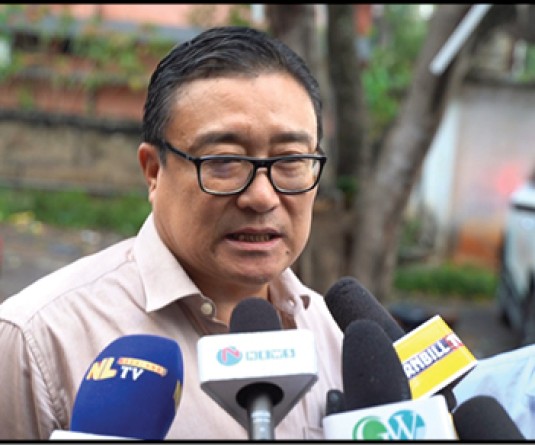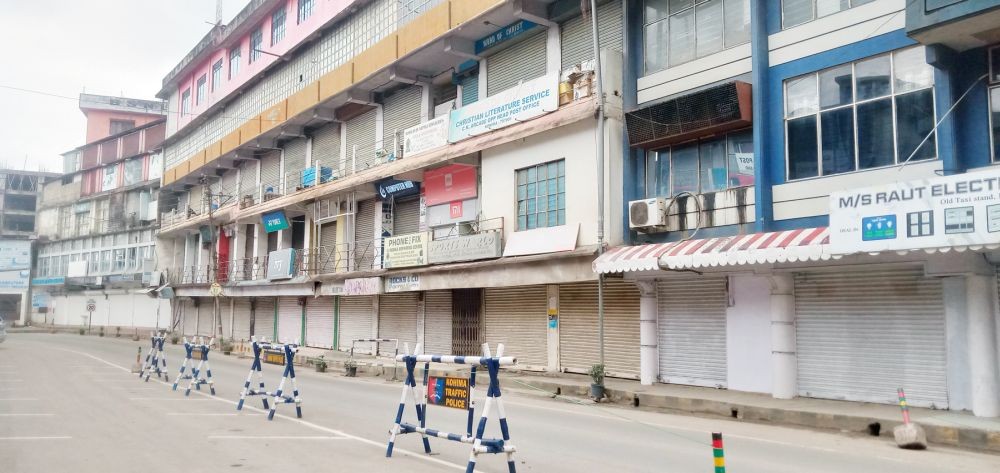
Morung Express News
Haflong | November 22
Silence around the Framework Agreement signed between the NSCN (IM) and the Government of India (GoI) on August 3, 2015, has become a thorn in the foot for neighbouring peoples to the Nagas. While six Naga national groups have now been brought into the ambit of political talks with the Government of India, the Naga neighbourhood still feels left out from the peace process.
This has given rise to confusion, apprehension and fear that the land of non Nagas may be usurped to create ‘Greater Nagaland’ aka ‘Nagalim.’
Dima Hasao district (former NC Hills) became the latest to join a growing din against the secrecy surrounding the Framework Agreement. On November 21, people from several communities came out in a silent rally through Haflong town under the banner of ‘All Apex Body Co-ordination Committee’ (AABCC). Some placards stated, ‘No land to Nagalim’ alongside ‘Peace is all we need.’
In a memorandum submitted to the Prime Minister of India, through the Dima Hasao DC, they expressed “distress, frustration and resentment” at the way the Framework Agreement has been “hidden” and “shrouded in a cloak of secrecy.”
While affirming “territorial integrity,” the Indo-Naga talks “should not disturb our district while trying to find solution to the Naga problem,” maintained the memorandum signed by AABCC President, Kailen Daolagupu, and General Secretary, Sounmang Changsan.
While urging upon the GoI to consider the effects of “land alienation,” the AABCC asked for the Framework Agreement be brought to “public domain” and not lead to it parting with “our ancestral land to Nagalim.”
Christmas Gift
While the Framework Agreement sets certain rules to take the peace process forward, major outlines remain under negotiation. Hope remains that a ‘logical, acceptable and honourable’ solution will emerge, and every Christmas, this is expected in the form of a ‘gift.’
But not just by the Nagas.
“Government of India is planning to give a Christmas Gift to NSCN (IM), and if the Gift is our land, it is not acceptable,” said a Dimasa mother of two who participated in the silent rally on November 21. According to information from her apex bodies, 60% of Dima Hasao district will “become” Nagalim leading to non Nagas being alienated from their land.
Dima Hasao district houses nearly 13 ‘tribes;’ the Zeme Nagas are the second largest majority after the Dimasa.
To alleviate apprehension, the Zeme Council (apex body of the Zeme Nagas in Assam) and the Zeliangrong Baudi (Assam) organized a meeting of apex bodies in Dima Hasao district on November 16.
“Nine communities attended that meeting. We explained to them whatever we know of the Framework Agreement and suggested that we meet the Collective Leadership (NSCN-IM) together in order to gain clarity,” said Pauheu Newme, President of the ZB (Assam), while speaking to The Morung Express. He was accompanied by Robert Riame, President of the Zeme Council.
He acknowledged how there is considerable fear of a ‘Christmas Gift’ every year among the majority Dimasa. The 2009 Dimasa-Naga conflict still remains in popular memory. With the non Dimasa people of the district forming a collective platform under the Indigenous Peoples’ Forum, fear is further exacerbated.
“We are attempting to build good relations with the neigbouring communities,” maintained Newme who had managed to persuade the apex bodies to call off the rally in order to understand the situation before responding. But the rally was held anyway. The Zeme and Rongmei people of the district refrained from taking part in the interest of peace.
Living together
Protests similar to November 21 have been ongoing in Karbi Anglong district of Assam too.
Amidst this, Dima Hasao and Karbi Anglong districts have stepped up the demand of creating a separate autonomous hill state (under Article 244-A of the Indian Constitution). Within this, there are demands for creating separate autonomous councils for the Nagas in each of these areas.
As the BJP at the centre grapples to find a solution acceptable to all communities, the above complexities “will lead to prolonging the Naga issue and create division among communities,” felt Newme.
For the Nagas in neighbouring states, who find themselves increasingly marginalized from development processes, this could spell further trouble, and it is up to the apex bodies to maintain peace.
“We have to organize to bring the communities together. For, whether solution or not, we have to continue living together,” said Newme.
Open sharing of information and a people-inclusive peace process could go a long way in ensuring this.




